This article was medically reviewed by Luba Lee, FNP-BC, MS. Luba Lee, FNP-BC is a Board-Certified Family Nurse Practitioner (FNP) and educator in Tennessee with over a decade of clinical experience. Luba has certifications in Pediatric Advanced Life Support (PALS), Emergency Medicine, Advanced Cardiac Life Support (ACLS), Team Building, and Critical Care Nursing. She received her Master of Science in Nursing (MSN) from the University of Tennessee in 2006.
There are 11 references cited in this article, which can be found at the bottom of the page.
This article has been viewed 489,043 times.
When you are pregnant, your uterus will begin to grow and change shape. Once you are in your second trimester, you’ll be able to feel your uterus by gently pressing down on your lower abdomen. This can be a fun way to feel connected to your baby. If you're not pregnant, it can still be helpful to know where your uterus is—especially if you feel certain symptoms, like cramps. Talk to your doctor about any health concerns that you have.
Steps
During Pregnancy
-
1Lie down on your back. You’ll be able to locate your uterus more easily if you are flat on your back. You can lie on your bed, sofa, or wherever you feel comfortable. Take a few deep breaths to help yourself relax.[1]
- Doctors generally advise that you don’t lie on your back too much after about 20 weeks of pregnancy, because the weight of the uterus can compress major blood vessels and restrict the blood flow to you and your baby. Only stay in this position for a few minutes, and sit up or roll onto your side if you start to feel dizzy, breathless, or nauseated.[2]
- You could also relieve pressure by using a pillow to prop one side of your body up.
-
2Locate your pubic bones. Finding your pubic bones can help you get a sense of where you’ll feel your uterus. Your pubic bones are directly above your pubic hair line. These are the bones you will feel when you are feeling your belly to find your uterus. A general guideline is that your uterus should be behind your pubic bones or slightly above that area.[3]
- In very early pregnancy, your uterus will still be behind or under your pubic bones, making it difficult or impossible to feel it. However, the top of the uterus will gradually get higher in your belly as the pregnancy progresses.
Advertisement -
3Feel your belly below your navel if you are 20 weeks pregnant. Your navel is commonly referred to as your belly button. Before you are 20 weeks, your uterus will be located beneath your navel. Place your hands on your belly right below the navel.[4]
- The first day of your last menstrual period is considered the start of your pregnancy. You can count from that date to figure out how far along you are.
- You may still be able to feel your uterus if you are less than 20 weeks pregnant.
-
4Find your uterus above your navel if you are 21 weeks or more pregnant. When you are further along in your pregnancy, your uterus will be above your naval. Place your hands on your abdomen just above your belly button.[5]
- During your third trimester, your uterus will be the size of the watermelon, so you will have no trouble feeling it.[6]
-
5Press your fingertips gently against your stomach. Begin moving your fingertips slowly and carefully around your abdomen. Your uterus will feel round and a little firm. Press carefully along the sides of your abdomen and follow the curve of the uterus until you feel the top of the uterus, which is called the fundus.[7]
- The fundus will feel like a firm ball inside your belly.
-
6Measure the size of your uterus to determine how far along you are. You and your doctor can measure your uterus to determine how many weeks pregnant you are. Using centimeters, measure the distance between your pubic bone and the top of your uterus. The number should correspond to how many weeks pregnant you are.[8]
- For example, if the distance is 22 centimetres (8.7 in), you are likely 22 weeks along.
- If the numbers don't seem to be matching up, this may indicate that your original due date was inaccurate. It can also be a sign that the baby is bigger or smaller than expected, or that there is an unusually large or small amount of amniotic fluid in your uterus.
- If you get an unexpected number when you measure your uterus, try not to worry. Your doctor can perform an ultrasound or other tests to figure out what’s going on.
When You Are Not Pregnant
-
1Call your gynecologist if you think you have a prolapsed uterus. Uterine prolapse happens when the pelvic floor muscles weaken and can’t hold the uterus in place. This typically occurs in postmenopausal women and in women who have had more than one vaginal delivery. If your uterus is prolapsed, you might feel like it is falling out of your vagina. Contact your gynecologist as soon as possible. Other symptoms include:[9]
- A sensation of heaviness in your pelvis
- Tissue sticking out of your vagina
- Trouble urinating or having bowel movements
- A feeling of looseness or lack of muscle tone in your vagina during sex
-
2Watch for symptoms of uterine fibroids, such as pelvic pressure or pain. Fibroids are benign growths that often develop in the uterus during the childbearing years. Fibroids don’t always have symptoms, but sometimes you will feel pressure or pain in your pelvis or become constipated. You might also experience heavy periods or bleeding between periods.[10]
- Contact your gynecologist if you have any of these symptoms.
-
3Be aware of signs of adenomyosis, such as heavy or painful periods. Endometrial tissue typically lines the uterine wall, but with adenomyosis, the tissue grows into the muscular wall of the uterus. This condition typically clears up on its own after menopause. Contact your gynecologist if you experience symptoms such as:[11]
- Severe cramping or knife-like pain in your uterus or pelvis during your period
- Blood clots or unusually heavy or prolonged bleeding during your period
- Pain during sex
- Persistent pelvic pain, even when you’re not having your period
-
4Try over-the-counter medicines or home remedies to cope with menstrual cramps. It is normal to feel your uterus cramp during your period. If your cramps are severe, there are things you can do to relieve the pain. Try home remedies such as an over-the-counter pain reliever like Ibuprofen or Midol. You can also try a heating pad or hot bath to ease your pain.[12]
- If your cramps are severe enough to disrupt your daily life every time you have your period, or if they keep getting worse over time, call your doctor. You should also see your gynecologist if you suddenly start getting worse cramps after age 25.
- Severe period cramps can be a sign of an underlying health problem, such as endometriosis, fibroids, or pelvic inflammatory disease.
Expert Q&A
-
QuestionI might be pregnant, and I don't have a menstrual cycle. I have a lot of the signs and symptoms. What should I do? I'm on disability.
 Luba Lee, FNP-BC, MSLuba Lee, FNP-BC is a Board-Certified Family Nurse Practitioner (FNP) and educator in Tennessee with over a decade of clinical experience. Luba has certifications in Pediatric Advanced Life Support (PALS), Emergency Medicine, Advanced Cardiac Life Support (ACLS), Team Building, and Critical Care Nursing. She received her Master of Science in Nursing (MSN) from the University of Tennessee in 2006.
Luba Lee, FNP-BC, MSLuba Lee, FNP-BC is a Board-Certified Family Nurse Practitioner (FNP) and educator in Tennessee with over a decade of clinical experience. Luba has certifications in Pediatric Advanced Life Support (PALS), Emergency Medicine, Advanced Cardiac Life Support (ACLS), Team Building, and Critical Care Nursing. She received her Master of Science in Nursing (MSN) from the University of Tennessee in 2006.
Board-Certified Family Nurse Practitioner Contact your doctor for a proper evaluation and care of your current symptoms.
Contact your doctor for a proper evaluation and care of your current symptoms. -
QuestionIs it possible for a woman to feel pains in her uterus while pregnant?
 Luba Lee, FNP-BC, MSLuba Lee, FNP-BC is a Board-Certified Family Nurse Practitioner (FNP) and educator in Tennessee with over a decade of clinical experience. Luba has certifications in Pediatric Advanced Life Support (PALS), Emergency Medicine, Advanced Cardiac Life Support (ACLS), Team Building, and Critical Care Nursing. She received her Master of Science in Nursing (MSN) from the University of Tennessee in 2006.
Luba Lee, FNP-BC, MSLuba Lee, FNP-BC is a Board-Certified Family Nurse Practitioner (FNP) and educator in Tennessee with over a decade of clinical experience. Luba has certifications in Pediatric Advanced Life Support (PALS), Emergency Medicine, Advanced Cardiac Life Support (ACLS), Team Building, and Critical Care Nursing. She received her Master of Science in Nursing (MSN) from the University of Tennessee in 2006.
Board-Certified Family Nurse Practitioner Yes, it is possible to feel mild to moderate pain similar to cramping while pregnant. If these sensations are brief, transient, and are not increasing in intensity or frequency, it is nothing to worry about. These mild aches can be related to changes that are taking place in your body. It can also be related to constipation, bloating, food intolerance, or pressure on the round ligaments that support your uterus. If the pain feels severe and is not going away, don’t ever hesitate to reach out to your doctor.
Yes, it is possible to feel mild to moderate pain similar to cramping while pregnant. If these sensations are brief, transient, and are not increasing in intensity or frequency, it is nothing to worry about. These mild aches can be related to changes that are taking place in your body. It can also be related to constipation, bloating, food intolerance, or pressure on the round ligaments that support your uterus. If the pain feels severe and is not going away, don’t ever hesitate to reach out to your doctor.
References
- ↑ https://www.parents.com/pregnancy/my-body/changing/starting-to-pop/
- ↑ https://wexnermedical.osu.edu/blog/should-pregnant-women-avoid-sleeping-on-their-backs
- ↑ https://www.open.edu/openlearncreate/mod/oucontent/view.php?id=40&printable=1
- ↑ https://americanpregnancy.org/healthy-pregnancy/pregnancy-health-wellness/uterus-size-during-pregnancy-5539/
- ↑ https://www.open.edu/openlearncreate/mod/oucontent/view.php?id=40&printable=1
- ↑ http://americanpregnancy.org/while-pregnant/uterus-size-during-pregnancy/
- ↑ http://www.newkidscenter.com/Uterus-Size-During-Pregnancy.html
- ↑ https://www.mayoclinic.org/healthy-lifestyle/pregnancy-week-by-week/expert-answers/fundal-height/faq-20057962
- ↑ http://www.mayoclinic.org/diseases-conditions/uterine-prolapse/symptoms-causes/syc-20353458
About This Article
To feel your uterus when you’re pregnant, start by lying on your back on a bed or sofa. Then, locate your pubic bones, which are the bones directly above your pubic hair line. If you’re under 21 weeks pregnant, place your hands on your belly just below your navel or belly button. If you’re 21 weeks pregnant or more, feel for your uterus above your naval. Either way, use your fingertips to feel for the round firmness of your uterus. To work out the size of your uterus, measure the distance between your pubic bone and the top of your uterus. For more tips from our Medical co-author, including how to recognize the symptoms of a prolapsed uterus, read on!
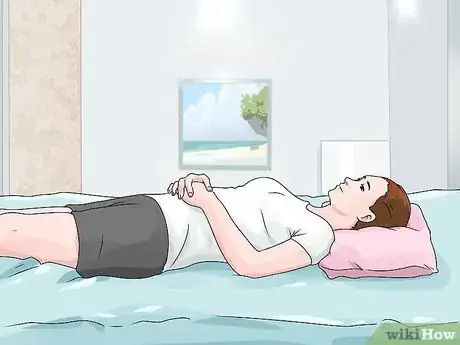

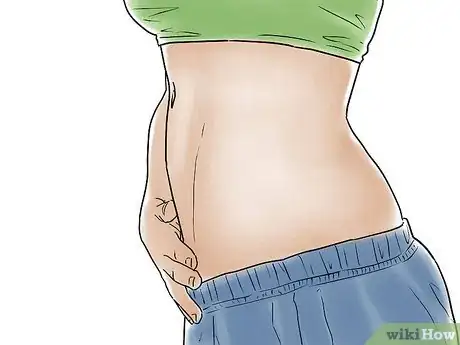




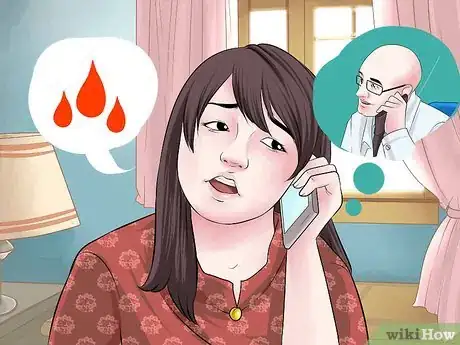
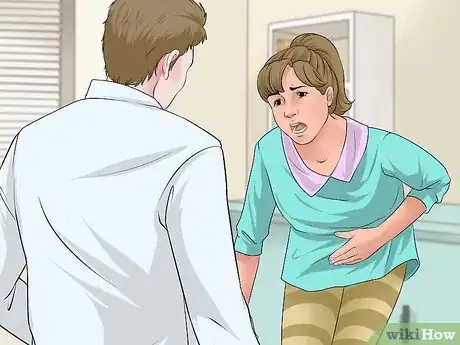
-Step-3.webp)

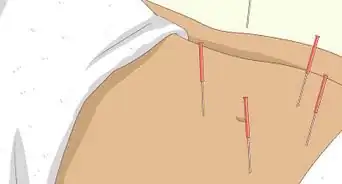



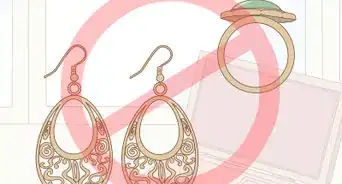
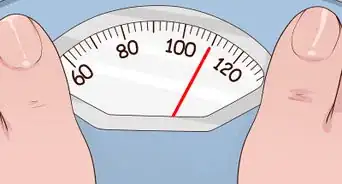

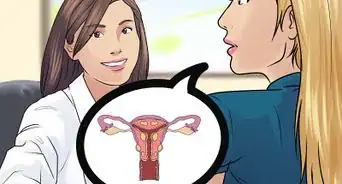

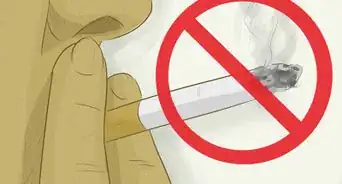
















































Medical Disclaimer
The content of this article is not intended to be a substitute for professional medical advice, examination, diagnosis, or treatment. You should always contact your doctor or other qualified healthcare professional before starting, changing, or stopping any kind of health treatment.
Read More...